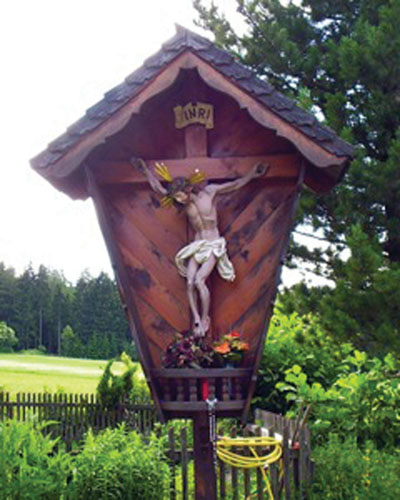
On April 22, the majority of the world’s Christians will observe
one of their faith’s most important days with fasting abstinence,
prayer or penance. Good Friday, the Friday before Easter, marks the
anniversary of the day Jesus of Nazareth was tried before Roman
authorities, condemned to death, crucified and buried in a borrowed
tomb.
On April 22, the majority of the world’s Christians will observe one of their faith’s most important days with fasting abstinence, prayer or penance. Good Friday, the Friday before Easter, marks the anniversary of the day Jesus of Nazareth was tried before Roman authorities, condemned to death, crucified and buried in a borrowed tomb.
For decades this has been an occasion for ecumenical worship, for Christians of different traditions to set aside doctrinal differences and come together to mark an important date in their shared faith. Two South Valley communities are continuing this practice.
HOLLISTER
There will be a combined worship service held at Sacred Heart Roman Catholic Church (680 College St.) at 7 p.m. Clergy from St. Benedict Catholic Church, Hollister United Methodist Church, St. Luke’s Episcopal Church and Abundant Life Church will begin the liturgy by carrying a large wooden cross down the main aisle, symbolic of the instrument of Jesus’ torture.
The service will continue with readings from the Passion Gospel, prayer and music provided by the Abundant Life choir accompanied by musicians from the sponsoring congregations.
The Rev. Amy Denny-Zuniga, priest in charge of St. Luke’s, invites all residents to participate.
“It’s important and wonderful to come together around what Jesus did for us at this sacred time,” she said. Call (831) 637-9212 for more information.
GILROY
St. Mary Roman Catholic Church (11 First St.) is hosting an ecumenical observance from noon to 1 p.m. The liturgy will include opening and closing hymns, readings from the Gospel of John, followed by reflections and prayer.
Clergy participating in the service are Fathers Dan Derry, Tad Terembula and Deacon Pat Allen, all of St. Mary, the Rev. Eric Cho of Gilroy United Methodist Church, and the Rev. Ron Koch of Good Shepherd Lutheran Church. An offering to support the work of St. Joseph’s Family Center, Gilroy’s ecumenical antipoverty ministry, will be taken. Call (408) 847-5151.
***
There is some debate about the origin of this paradoxical name, “Good Friday.” What could be “good” about a day of such tragedy? One theory says that “good” is a corruption of “God’s” (thus, “God’s Friday.”) This is the same process by which we now have “goodbye,” a contraction of what was originally the expression “God be with ye.”
Other scholars say that “good” was always the word, referring to the many benefits that humanity received through Jesus’ suffering and death – good coming out of evil, so to speak. (Eastern Orthodox Christians avoid this puzzle by referring to the day as “Holy” or “Great” Friday.)
As early as the fourth century, Christians began to observe this special day with a three-hour service beginning at noon and lasting until 3 p.m., the time of the “passion,” the agonizing death on the cross recounted in the Gospels.
A traditional type of worship service was developed in the 18th century for Good Friday, called “Tre Ore” or “Three Hours.” It consists of seven short sermons, each based on one of the last utterances of Jesus as recorded in the Gospels. These are usually separated by hymns, scripture-readings and prayers. Not so long ago, it was common for businesses to close for at least part of the afternoon so that employees could attend this service.
Other popular ways to observe Good Friday include The Way of the Cross, when Christians walk inside or outside a church and stop to pray at 14 crosses (“stations”) representing events on Jesus’ travel to his crucifixion, and The Veneration of the Cross, when Christians approach a wooden cross and reverently kneel to pray before it (or, sometimes, kiss it).
Tenebrae, Latin for “darkness,” is a service held in the evening. While the church is illuminated by seven candles, six are individually extinguished as the service progresses, leaving only a single candle remaining lighted to symbolize that even in the midst of death and darkness the light of Christ can prevail. It ends with the roll of a tympani suggesting the closing of the tomb.
In liturgical churches (such as Roman Catholic, Episcopal and Lutheran), no Eucharist is celebrated on this day; the altars were stripped the day before (“Maundy” or “Holy” Thursday, the evening commemorating the Last Supper that Jesus shared with his disciples before being arrested), and any immovable crosses were shrouded by black cloth. If Holy Communion is part of the Good Friday service, it is celebrated from the “Reserved Sacrament,” using bread and wine consecrated the day before for this purpose.









